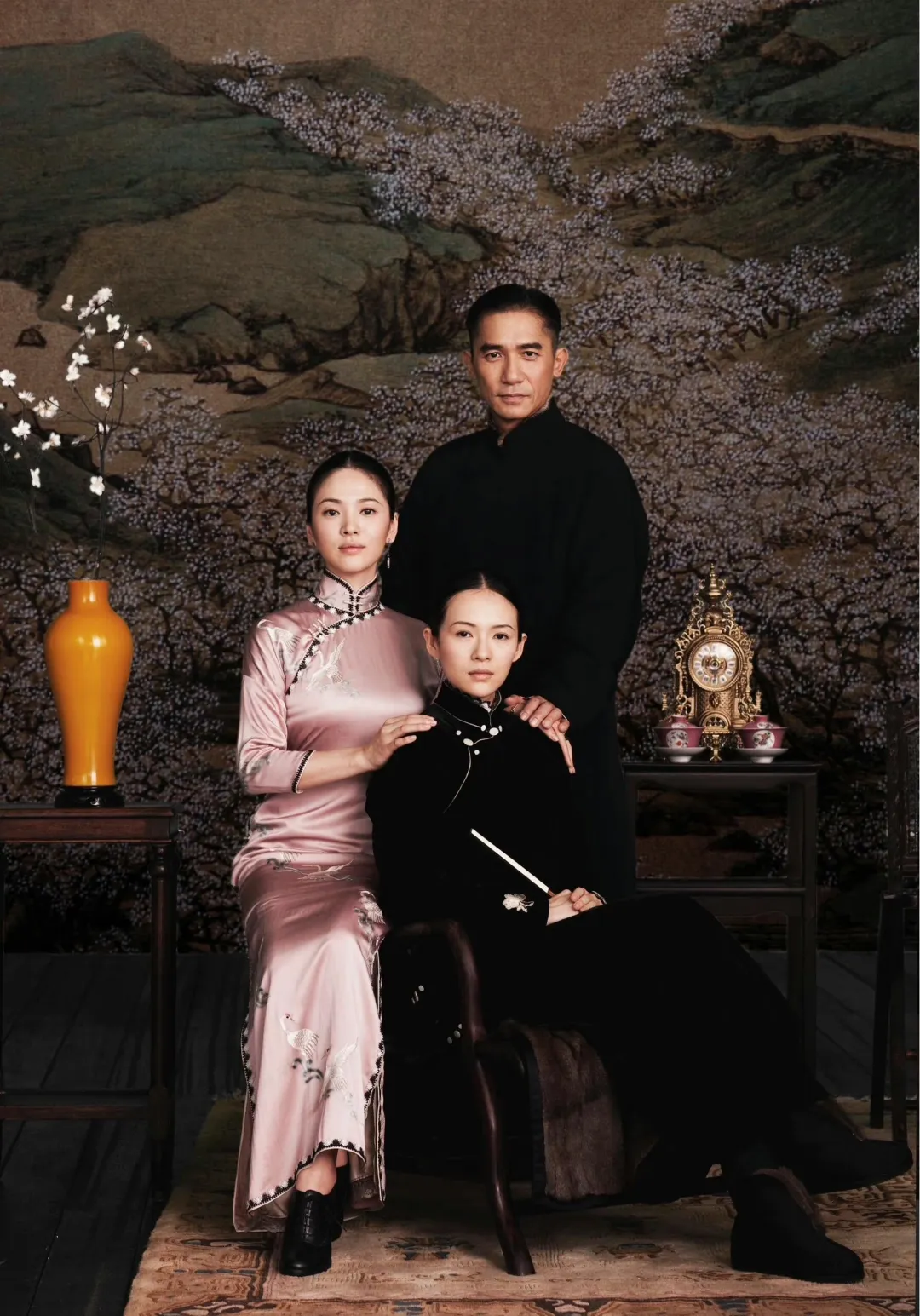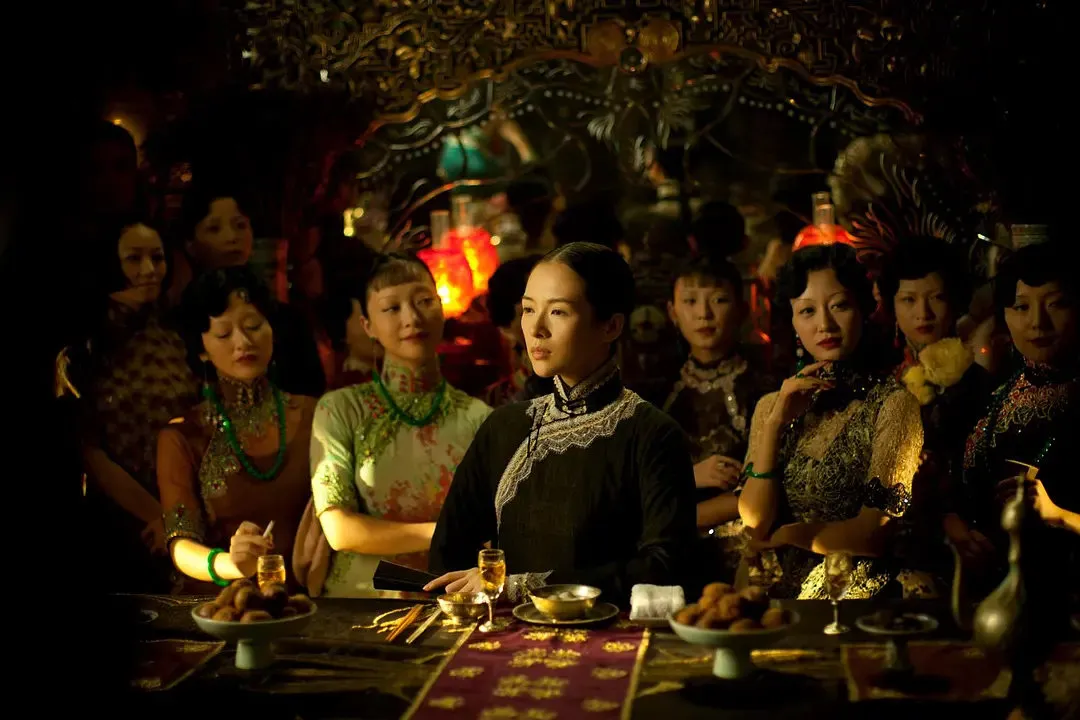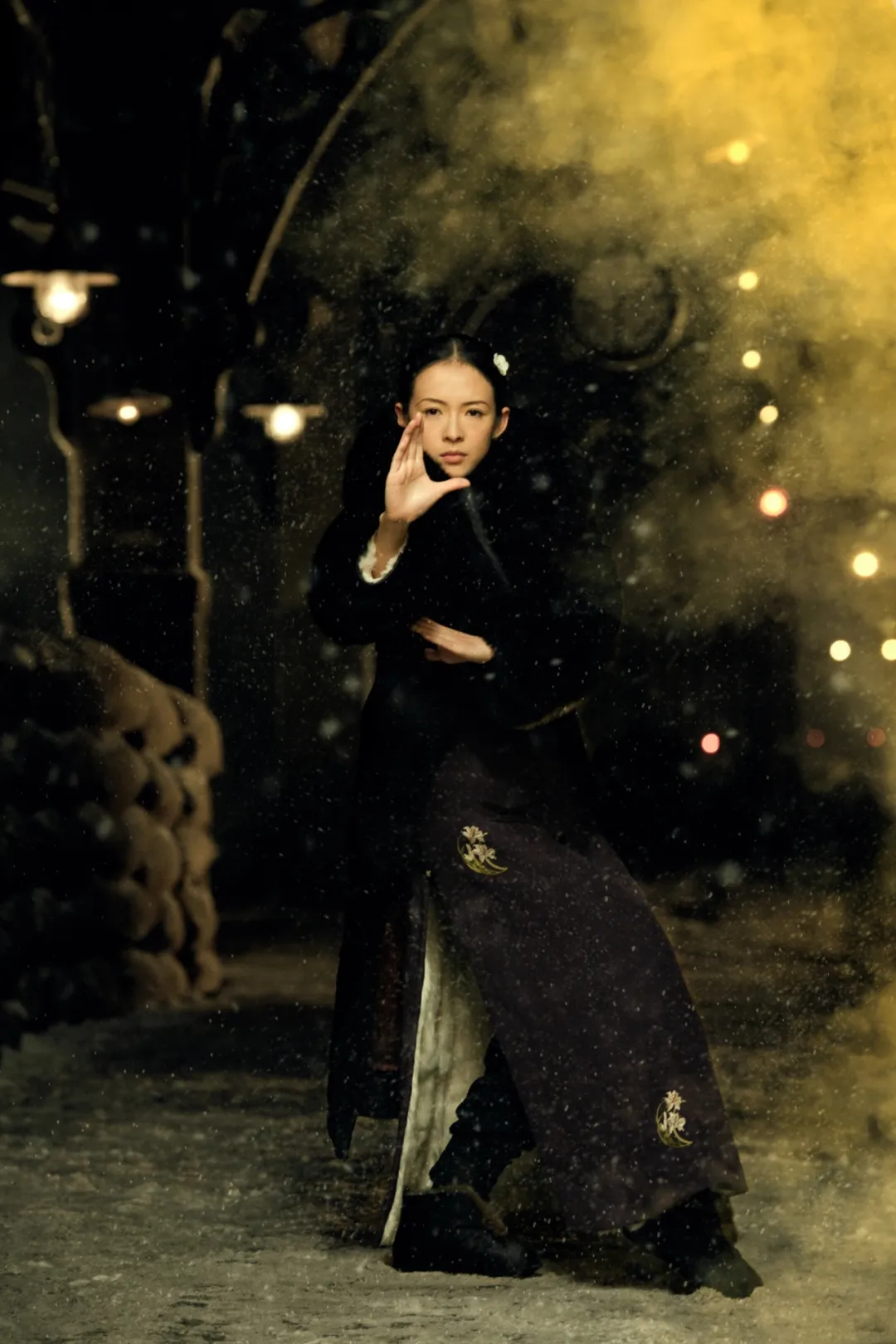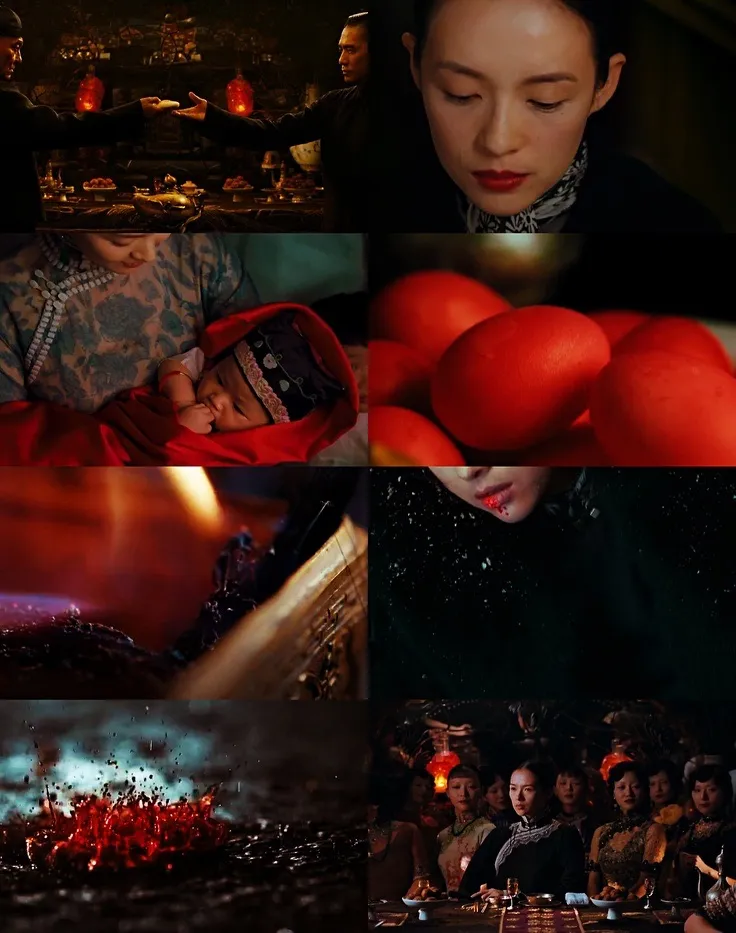"There is a Western writer (was it Bernard Shaw?) who once complained that most women choose their husbands far less attentively and carefully than they choose their hats. Even the most heartless woman speaks with affection when she talks about 'that brocade-lined robe from last year.'"

This passage is from Eileen Chang's Record of Changing Clothes, with Ms. Chang's usual sharp and incisive writing style and unique perspective. Women's love for clothes seems to be innate. The colors, patterns, and styles of clothes are not only a source of beauty in women's lives but also reveal the diverse and rich inner worlds of their souls.
For women, clothes not only enhance and reflect beauty but also relate to a person's deeper inner operating rules and aesthetic creative desires. In other words, they are the visible external features of a person's inner self. This is true for people, and even more so for a film with extremely high artistic value. For a director like Wong Kar-wai, who has an almost extreme pursuit of audio-visual language, women's clothes are the second language in his films.
So, in In the Mood for Love, the cheongsam is the most direct manifestation of Su Lizhen's emotional changes. In The Grandmaster, the cheongsam is the background color of Gong Er's fate.
So, in this issue, we will still focus on the film theme of Director Wong Kar-wai and talk about the aesthetics of the cheongsam in The Grandmaster.
Gong Er
Gong Er, also known as Gong Ruomei (Zhang Ziyi), is respectfully called Mr. Gong Er. She is the only daughter of Gong Baosen, the master of Northern Bagua Palm, and the inheritor of the Sixty-Four Hands. She is half the head of the Gong family. She became famous in the martial arts world with her skill 'Hidden Flowers under the Leaves' and finally dedicated herself to Taoism to avenge her father.
In terms of personality, she is neither as reserved and gentle as Ye Wen, a great martial arts master, who knows how to adapt to circumstances; nor is she as open-minded, steady, heroic, and humble as her father, Gong Baosen. Gong Er is a stubborn and fiery woman. She has a more human side, but her stubbornness is hidden under her seemingly soft female figure, and her fiery temper is covered with a firm and calm backbone. She never admits defeat in her life.
From challenging Ye Wen to regain the reputation of the Gong family to dedicating herself to Taoism to eliminate Ma San, the murderer of her father, and deciding not to get married, take in disciples, or have descendants, this martial arts master, who was as short-lived and brilliant as a meteor, set the tragic tone of her personality - being too rigid makes one easily break, and being too affectionate shortens one's lifespan.
So, when we study the color of Gong Er's fate, her cheongsam is a ready-made reference.
At that time, Gong Er was still a noble and proud young lady. However, compared with traditional young ladies, Gong Ruomei seemed to have more courage and toughness because of her childhood martial arts training and her father's teachings. Because her father, Gong Baosen, the master of the Eight Trigram Fist, wanted to retire from the martial arts world and chose Ye Wen, who was still unknown at that time, as a candidate to promote the spread of Southern boxing in the North before his retirement, he decided to have a match with Ye Wen. The intention was not about winning or losing. If Ye Wen was worthy of the task, Gong Baosen didn't mind using his reputation as a grandmaster to pave the way for this junior and let him continue the great wish of spreading Southern boxing in the North.
Against this background, Miss Gong Er came to Foshan, Guangzhou, wearing a black high-collared cheongsam with a narrow hem. The embellishments on the cheongsam were very introverted and exquisite, with pearls as the piping and a wave pattern under the collar. Among a group of senior martial arts masters, her determination still carried a little bit of girlish innocence.
However, these old-fashioned martial artists in the North didn't understand Gong Baosen's great wish and broad mind. They only saw the issue of face in winning and losing, so they asked Gong Baosen's beloved daughter, Gong Er, to persuade her father not to go to the South to have a match with Ye Wen. It was this conversation that showed us the deep-rooted and unshakable pride in Gong Er's character. She stood in the dark background and simply said, 'My father has never lost a match in his life. What's the point of talking about winning or losing?' It can be seen that never losing a match is the confidence and glory of the Gong family, but this glory can also be a burden.
The camera turned, and Gong Er came to her father's side, changing into a dark blue cheongsam of the same dark color. However, the pearls used for the piping were replaced with slightly more feminine lace. Whether it was the delicate pearls or the beautiful lace, they were all the glory of the wealthy. Against the low-key wooden buttons, it was just like Gong Er herself, who had both the splendor of life and a very pure and simple core, which was martial arts.
Unfortunately, Gong Er was still just a young lady of the Gong family who had not experienced the ways of the world. So, it was difficult for her to understand why Gong Baosen wanted to use his status and reputation as a grandmaster to pave the way for a junior. She questioned what made Ye Wen worthy? His status? His martial arts skills? Both of these were achieved through hard work in winning and losing. In the end, what Gong Er really cared about was winning and losing itself.
So, Gong Baosen gave her two pieces of advice: 'Anyone who can't stand to see others do well has no tolerance. Our Gong family has high standards, but we don't produce villains.' It can be seen that Gong Baosen had already stepped out of the circle of personal heroism. What he wanted was to create countless heroes in the current situation and to carry forward the unique martial arts skills of a school.
So, Gong Er's third scene is very important. She stood in the dark as an onlooker and watched how her father stepped down. Just as Gong Baosen said when he took his daughter to the brothel in the previous scene, 'You're engaged. The affairs of the martial arts world have nothing to do with you. Being a good doctor and living a peaceful life is filial piety.'
Unfortunately, Gong Er, wearing a white cheongsam, stood gracefully in the dimly lit background. All she could see was just the light and shadow of this moment. Just like her cheongsam, it was still too thin to withstand the wind and rain. From the color to the decoration, it could only be worn for a few seasons at most.
So, Gong Er immediately sent a challenge letter to Ye Wen. The Gong family, which had never lost a match, could find someone to retrieve the honor if they lost. At this moment, Gong Er was wearing a slightly more complicated and gorgeous black cheongsam. The style was still as reserved and proper as always, but it used light blue and light yellow intersecting eyelash lace, with a well-defined shape setting off the neck and shoulders.
And this kind of complex beauty was in contrast to her lines: 'I won't be able to become a hero like my father in this lifetime, but I don't aim for a lifetime. I only aim for a moment.' Gong Er, who only aimed for a moment, still lived up to what Gong Baosen said. Some people live for face.
It was also in this cheongsam that Gong Er had her first encounter with Ye Wen. Sitting among a group of beautiful women in all their glory, Gong Er still had a natural face. Compared with the women behind her, at this time, Gong Er was first and foremost a martial artist, and then a woman.
Her cold, rigid, and straight body and expression doomed her to a life of struggle. Unfortunately, the aging Gong Baosen wanted to keep his daughter away from disputes, but he forgot that the Sixty-Four Hands he left to Gong Er did let her see the world, but seeing the world came at a corresponding price. This is also the way of the world.
In this duel, Gong Er won. She won in the slightest struggle of a martial artist. The exchange of moves and the rapid thinking were secondary. The momentary struggle of the mind was the key. So, Miss Gong Er, who only aimed for a moment, narrowly won with a flaw, but she also gave her heart.
After giving her heart, Gong Er returned to the Northeast. However, the heavy snow in the Northeast winter did not extinguish the heat of her heart. The two started a period of communicating with each other by letters.
That period could be said to be the most peaceful and immersive time in Gong Er's life! Immersed in that hearty martial arts match, immersed in the moment when their eyes met, immersed in the dream of 'Hidden Flowers under the Leaves once, stepping on the snow in dreams several times.'
With affection in her heart, Gong Er put on a slightly dull dark red cheongsam. It was still made of simple material, matching the single pearl earring on her ear. The earring swayed in the expectation of 'Once the promise is made, nothing can stop me,' but the long expectation in love was always a bit lonely. So, even the red cheongsam couldn't hide the melancholy between her eyebrows.
Perhaps this melancholy also carried some foreseeable life implications. Gong Er was doomed not to wait for that meeting without any obstacles, but instead, she waited for a cruel blow from fate.
When Japan invaded China and Foshan fell, Gong Baosen's eldest disciple, Ma San, defected to the Japanese. He not only took away the inheritance of the Gong family but also the master-disciple relationship that Gong Baosen had shown mercy even at the last moment. Gong Baosen's unique skill, 'Old Ape Hanging the Seal,' became a lonely horizontal scroll like a Buddhist motto. The old ape hanging the seal was both about letting go, turning back, and 'not asking about kindness and hatred.'
But if life was so easy to turn back, how could there be so many endings full of love, hatred, and obsession! So, Ma San didn't turn back, and he betrayed his master and destroyed his family, ending up in a tragic situation; Gong Er also didn't turn back, so she broke off her engagement and dedicated herself to Taoism. From then on, the Sixty-Four Hands of the Gong family disappeared from the world.
In the end, Gong Er still won. She retrieved the martial arts way that she always believed in: The Gong family has never lost a match. With the belief of 'gathering a breath and lighting a lamp,' she took back what belonged to the Gong family.
The duel between Gong Er and Ma San was the supreme moment of feminism in the whole film. Gong Er wore a dark cotton-padded embroidered cheongsam. The scattered embroidery on the collar and hem were two white lilies. On that solemn and snowy night of life and death, those pure and cold lilies stubbornly and tenaciously showed their beauty. Matched with a large fur collar, her solemn, steady, decisive, and intelligent kingly aura emitted a power and domineering no less than any man under the full blow of the 'Old Ape Hanging the Seal' skill.
This is the ultimate charm of the character Gong Er. She broke through the narrow and blind female confine in feudal traditional culture with her own strength and retrieved the right that a person should have - without relying on anyone, a woman can also avenge her father with her own strength.
In the end, the Sixty-Four Hands forever disappeared into the dust of history, leaving only a woman named Gong Er, a woman wearing a beautiful cheongsam, a woman who could finally be herself at the last moment of her life.
The dark-colored floral patterns in a delicate style wrapped Gong Er's figure so evenly and gracefully. Wearing a knitted cardigan over it, the brown color was both deep and bright. Matched with her vicissitudinous eyes that had seen it all, she slowly expressed the confession of 'The light boat has passed through countless mountains.'
But is her confession really a woman's confession to a man? Not necessarily! Perhaps it is the final confession of a stubborn and extraordinary woman to her fate in this life.




